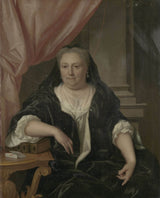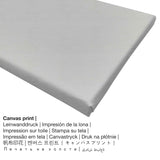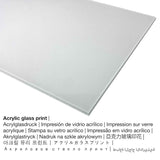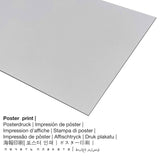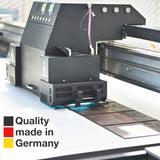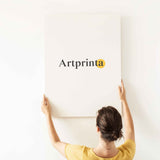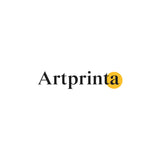Philip van Dijk, 1725 - Eserese nke Mary Citters, nwunye Caspar Adriaen - ọmarịcha nka.
Ụtụ gụnyere. Mbupu gbakọrọ na ndenye ọpụpụ.
Ozi izizi gbasara ọrụ nka site na webụsaịtị ihe ngosi nka (© Nwebiisinka - site Rijksmuseum - Rijksmuseum)
Portrait of Mary of Citters, wife of Caspar Adriaen Parduyn. Sitting in front of a column, right arm leaning on a bible lying on a table. On the back side of the figure 13. Pendant SK-A-896.
Data ndabere gbasara nka nka izizi
| Aha nke ọrụ nka: | "Portrait of Mary Citters, Wife of Caspar Adriaen" |
| nhazi ọkwa: | sere |
| Okwu nche anwụ: | nka ochie |
| oge: | 18th narị afọ |
| Afọ nka: | 1725 |
| Afọ nka: | karịa afọ 290 |
| Egosiputara na: | Rijksmuseum |
| Ebe ngosi nka: | Amsterdam, Netherlands |
| Dị n'okpuru: | Rijksmuseum |
| Ikikere nke ihe osise: | ngalaba ọha |
| Site n'aka: | Rijksmuseum |
Onye na-ese ihe
| Aha onye nka: | Philip van Dijk |
| A makwaara dịka: | Dijk Philip van, Philippe Van Dyck, The lesser V. Dyck, van dyck ph., P. Van Dyck, Le petit Van Dyck de Hollande, Philip Vandyke, Philip Vandyck, P. Vandyke, philipp van dyk, Ph. Van Dyck, Philip Vandycx, P. Van Dyk, Philip Van Dijk, "Phil. Van Dyke", P. Vandyck, Dyk Philip van, Philip van Dyk, P. van Dijk, Ph. von Dyk, Ph. van Dijk, Ph. van Dyk, Philip van Dyke, Philippus van Dyk, dyck pulipp van, p^Th^R. van Dyk, Le petit Van Dick, Ph. v. Dyck, Philipp van Dyck, P. Van Dyke, Philip Van Dyck, Dyck Philipp van |
| Gender: | nwoke |
| Nationality: | Dutch |
| Ọrụ: | onye na-ese ihe |
| Obodo obibi: | mba netherland |
| Nhazi nke onye nka: | nna ukwu ochie |
| Ụdị nke onye na-ese ihe: | Baroque |
| Oge ndu: | 73 afọ |
| Afọ amụrụ: | 1680 |
| Nwụrụ n'afọ: | 1753 |
Ozi ihe ahaziri ahazi
| Nkewa ngwaahịa: | ọrụ mgbidi |
| Mmeputakwa: | dijitalụ mmeputakwa |
| Usoro mmepụta: | Mbipụta UV ozugbo |
| Mmalite nke ngwaahịa a: | German mmepụta |
| Stockdị ngwaahịa: | mmepụta ihe na-achọ |
| A na-atụ aro iji ngwaahịa eme ihe: | ime ụlọ, nka mgbidi |
| Nhazi nka nka: | usoro eserese |
| Njikwa oyiyi: | 1: 1.2 (ogologo: obosara) |
| Nkọwa: | ogologo bụ 20% mkpụmkpụ karịa obosara |
| Akụrụngwa dị: | mbipụta akwụkwọ mmado (akwụkwọ kwaaji), mbipụta kanvas, mbipụta enyo acrylic (nwere ezigbo mkpuchi iko), mbipụta ọla (aluminium dibbond) |
| Canvas dị n'elu ihe nrịbama (mbipụta kanvas) nha dị iche iche: | 50x60cm - 20x24", 100x120cm - 39x47" |
| Mbipụta iko acrylic (nwere ezigbo mkpuchi iko) nhọrọ nha: | 50x60cm - 20x24", 100x120cm - 39x47" |
| Mbipụta akwụkwọ mmado (akwụkwọ kwaaji): | 50x60cm - 20x24", 100x120cm - 39x47" |
| Ụdị mbipụta Dibond (ihe alumnium) dị iche iche: | 50x60cm - 20x24", 100x120cm - 39x47" |
| ụba: | adịghị |
Họrọ nhọrọ ihe ị chọrọ
Maka mbipụta nka ọ bụla anyị na-enye ihe dị iche iche & nha. Ị nwere ike ịhọrọ n'ime nhọrọ nhazi ngwaahịa ndị a:
- Metal (aluminium debond mbipụta): An Aluminium Dibond print is a print material with a true depth. For our Aluminium Dibond print, we print your selected artwork right on the aluminium surface. The bright parts of the artpiece shine with a silky gloss but without any glare. The colors are bright and vivid in the highest definition, details of the print appear crisp, and you can notice the matte appearance of the surface.
- Kwaaji: The printed canvas, which shall not be mistaken with a painting on a canvas, is a digital image printed on a cotton canvas material. How can I hang a canvas on the wall? Canvas prints are relatively low in weight. That means, it is easy to hang up the Canvas print without the use of additional wall-mounts. Canvas prints are suitable for any kind of wall.
- Mbipụta akwụkwọ mmado (akwa akwa akwa): The Artprinta poster print is a printed canvas paper with a slightly roughened finish on the surface. Please note, that depending on the absolute size of the poster print we add a white margin of approximately 2-6cm round about the print in order to facilitate the framing with your custom frame.
- Glass acrylic e biri ebi (nwere ezigbo mkpuchi iko): The acrylic glass print, which is sometimes labelled as a plexiglass print, will turn the original artwork into stunning home décor. The artwork is being printed with the help of state-of-the-art UV printing machines. This has the image effect of impressive, vivid color tones. The major benefit of an acrylic glass fine art copy is that contrasts plus minor painting details will be more recognizeable due to the subtle gradation in the picture. The real glass coating protects your chosen art print against sunlight and external influences for many years.
Ihe osise a na-ese ya nwoke Dutch artist Philip van Dijk in 1725. Ibe nka bụ akụkụ nke Rijksmuseum's art collection, which is the largest museum for Dutch art and history from the Middle Ages to the present day. We are delighted to state that the ngalaba ọha ọrụ nka na-agụnye n'ikike nke Rijksmuseum.Ezigbo nka nka bụ: . Na mgbakwunye na nke a, nhazi nke mmepụta dijitalụ bụ Eserese na nwere akụkụ ruru nke 1: 1.2, nke pụtara na ogologo bụ 20% mkpụmkpụ karịa obosara. The painter Philip van Dijk was an artist, whose artistic style can be attributed primarily to Baroque. The artist lived for a total of 73 years - born in the year 1680 ma nwụọ na 1753.
Ozi dị mkpa: We try everythig possible to describe our art products in as much detail as possible and to exhibit them visually in our shop. Although, the colors of the print materials and the printing can diverge marginally from the presentation on the device's screen. Depending on the screen settings and the quality of the surface, not all colors are printed as realistically as the digital version. In view of the fact that all our are printed and processed by hand, there might as well be slight discrepancies in the size and exact position of the motif.
© Nwebiisinka nke - Artprinta.com

